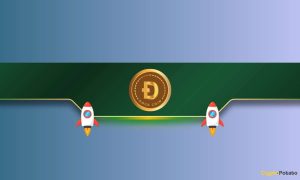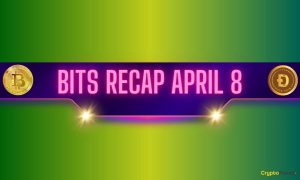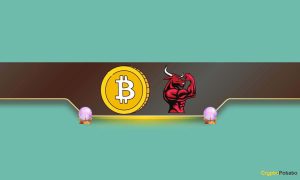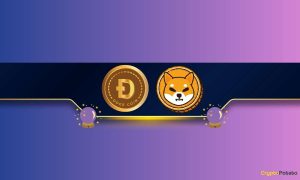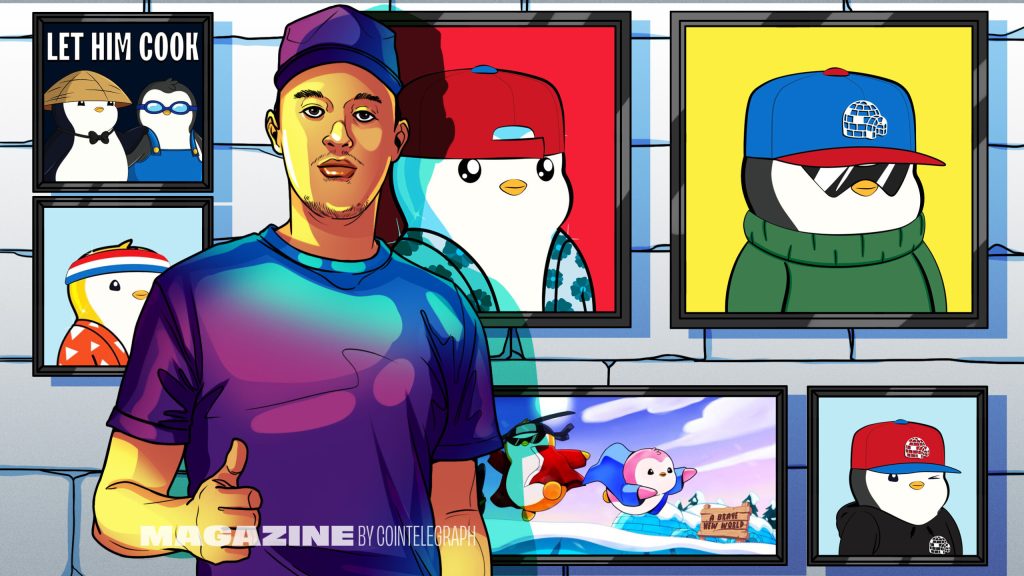
[ad_1]
Pudgy Penguins minted in July 2021, but quickly saw high drama after its former founder came under suspicion he was going to rug the project.
A few months later Luca Schnetzler stepped in. With an entrepreneurial streak since his early teens he had a history of building internet businesses and bought the project and its intellectual property of 8,888 cute little Pudgys for $2.5 million in April 2022.
“It was an instinct and intuitive decision. I saw this thing that I was hugely invested in before I bought it that I thought had all of the potential. I was complaining and crying on a daily basis to the founders about how they sucked, and how they could do better. Rather than just doing that, I just stepped up to the plate,” Schnetlzer says.
The narrative of quickly shifted from a rug that could trend to zero to one of hope and optimism when Schnetzler set out a vision for the project the community could rally behind.
Schnetzler became one of the standout PFP project leaders during the NFT bear market, and the Penguins bucked the trend of cratering floor prices. Since he took over as CEO, the Pudgy Penguins floor has risen from around the 1 ETH mark to 6.32 ETH. Holders and the wider NFT community believe that Schnetzler has a game plan for success and the ability to execute it.

He says the decision to snap the project up wasn’t as risky as it may have seemed.
“We bought something that netted almost $10 million in six months for $2.5 million. Royalties were making it half a million dollars per month. It was a pretty good business on its face. Intuitively, I think it just comes down to the vision when you close your eyes and you picture Pudgy Penguins, it’s pretty easy to see where this thing can go.”
Constant momentum and growth has been key to Pudgy’s ascent into one of the top PFP projects, with the cute penguin brand spreading across social media outside of traditional crypto channels like X and Discord. Pudgy’s Instagram has just crossed 1 million followers, while its GIF strategy has been highly effective, only days ago crossing the 10 billion views chasm.
The Pudgy Penguins GIFs and stickers on GIPHY have reached 10B views.
With 10B views and millions more each day, our GIFs allow us to cement the Pudgy Penguins IP in internet culture, becoming a brand people interact with every day. pic.twitter.com/odEIPgD2wc
— Pudgy Penguins (@pudgypenguins) November 27, 2023
Schnetzler thinks it’s a little bit sad that he gets such praise, when it just highlights how little effort other PFP projects put into trying to grow their brands.
“Everyone’s been saying that their NFT project is a brand, they have hundreds of millions of dollars that they raised from the community and venture capital at ridiculous valuations. Yet none of them are actually doing the basics of building a brand,” he says.
“Some people really sing my praises, and it’s actually pretty sad because I do think we do some things really well, don’t get me wrong, but I mean, this should have been the bar all along. The fact that we are doing so many things that so many projects are not doing when they have 10-20 times the resources and 2-3 times the experience is pretty shameful.”



Finding the entrepreneurial spirit
Despite only being 25 years old, Schnetzler actually started his entrepreneurial journey over a decade ago. Growing up poor and bouncing around couch to couch at friends’ places, Schnetzler says he needed to start earning at a young age.
“I’ve really been out of school working for 10 years and it’s pretty crazy to say, but that’s what it’s been,” he says, noting most people don’t even start working until they finish college in their 20s
“Then you do 10 years after you leave college and you’re 33, and then people start to see success in their 30s. That seems to be the time horizon. I think my childhood forced me to start early. I didn’t have the luxury of chilling out or having a childhood where I could just go home and play video games and not worry about anything. I was forced to go work and figure things out.”
Character building versus brand building
To date, most PFP projects are built around a centralized character with a variety of different traits to give each NFT a slightly different look and feel. Take the OG collection CryptoPunks, the Bored Apes, and it is also true for the Pudgys. But it’s not the case for Gary Vee’s VeeFriends, which boasts 270 individual characters.
Schnetzler believes character building around one individual character is the easier of the two options.
Read also
Features
Blockchain games aren’t really decentralized… but that’s about to change
Features
The Invisible Man of the Visible World: How Blockchain Could Offer New Hope to Stateless Rohingya
“At the end of the day, I think Gary is trying to tackle a tougher challenge. It’s part of the cards I was dealt and have, and he created his cards. I think he’s doing a great job with VeeFriends. I think ultimately he has to create familiarity. Creating familiarity around a character is a lot easier than creating familiarity around a brand,” says Schnetzler.
“They’re two different things and because his universe isn’t predicated on one character, but a multitude of different characters and different animals in different shapes. He is betting and taking a shot at the brand, and the brand name versus the character.”
“I’m going after the character first and then worrying about the brand because I believe there’s enough people that love penguins and few enough penguin brands out there.”

A brave new world – Walmart pallet program
In September this year, Pudgys announced a groundbreaking deal with retail giant Walmart that saw Pudgy Penguin physical toys available for sale and in prominent locations in over 2,000 stores throughout the U.S.
“The pallet program is one of the most prestigious places you can get because it gives prime real estate to people walking the floor. It signals Walmart’s belief in the brand and their belief in NFTs and Web3 being a vertical for their retail locations,” says Schnetzler.
“If that can become a general norm in the world’s biggest retailer it gives us a real shot to succeed. It’s one thing to be in the crevices of the toy shelf, it’s another thing to be front and center for everyone to see. That program doesn’t happen for brand-new brands. It’s normally a program for Barbie, Teenage Mutant Ninja Turtles or people that have movies and TV shows off the backs of their releases.”
Building a legacy brand with no playbook
One of the most common questions consistently thrown at a PFP project is “how do you drive value back to holders?”
In response to criticism about its toy product extension, Schnetzler laid out his plan on how Pudgy Penguins are thinking about value accrual to holders using a classic funnel diagram.
This is a terrible take.
In the below thread I will explain to you why this thought process is fundamentally wrong and why this take is incredibly bad 👇 https://t.co/5sGBpCJHA2
— Luca Netz 🐧 (@LucaNetz) August 5, 2023
“The funnel is not something that I’ve really invented. I mean, you can throw Star Wars and any other big legacy IP onto that funnel, and that’s the strategy. The idea, though, with NFTs is the value of the first edition collectible is a huge anchor to the business. If you put any first edition collectible at any legacy brand on the bottom of that funnel, it still makes the most sense,” he says.
“I want to build a legacy brand, the likes of a Hello Kitty, a Star Wars and a Pokemon.
That’s easier said than done, he admits, saying there’s no roadmap to follow for a PFP project.
“Hello Kitty took 60 years to build. My holders don’t have 60 years for me to go build something. If I lose momentum and traction within the holder base, then I ultimately lose everything because I don’t believe you can build a successful Web2 business while your Web3 business fails.”

Rapid-fire Q&A
Your entrepreneurial inspiration
“I love everything that I think Steve Jobs represents. For me personally, I’ve tried to be my own man, but the one person that I found huge inspiration from, you can kind of tell it in my leadership style, is really Steve Jobs.”
The intense pressure of a founder
“It’s not easy, but it’s also not the worst thing. One of the reasons why we got here is because of the community. I think I’m in a great situation because I bought the project and I didn’t take any money from them. The nature of people who hold Pudgy Penguin PFPs, they’re good people.”
Read also
Features
‘Make sure Ethereum wins’ — Steve Newcomb reveals zkSync’s prime directive
Features
Real AI use cases in crypto: Crypto-based AI markets, and AI financial analysis
“You can’t really be an angry, miserable person and then go click buy on a Pudgy Penguin. The art kind of creates a culture that already filters a lot of that nonsense out. Now, I empathize with a lot of other people who I see go through the chaos.”
What you would tell a Mom about Pudgys
“What I would tell a Mom is, ‘hey, this is a great value proposition for your son or daughter. This is way more fun than any other $10 toy.’”
“Why? Because they unlock a bunch of things in the digital world that not only entertain them when they go to bed or when they’re at recess or on the playground. But also entertains them when they are at home on their iPad and computer. It’s a 2-for-1 bang for buck special.”
Were the Pudgy gifs planned?
“The gifs were totally random. But the second we saw it, we quadrupled down, but it was totally random in the beginning. It was a sheer accident but a happy accident.”
“I don’t need people to know about Pudgy Penguins now, but you want to know something when NFTs are the talk of the town again, and all those people have been using Pudgy gifs the whole time, that’s going be a really good source of credibility for them once everyone starts to want to buy NFTs.”
What’s your position on royalties?
“It shouldn’t be 0% and it shouldn’t be 5%. I think it’s somewhere in the middle. I think the number is between 1% and 1.5% is where I think the enforceable royalty should stand. The reason being is because you just have to incentivize the creator. [That’s] what made YouTube great, what made TikTok great.”
Are you a Wim Hof fanboy?
“Every day I do his breathing technique and I get high doing it. I recommend it because it’s the quickest way you can get high for free. I’m also setting up my cold plunge now.”
Where are Pudgys three years from now?
“We’re the face of NFTs, we’re the face of Web3. We have brought the most value to holders emotionally and fiscally. Three years from now we’re probably launching a movie. The movie is close.”
Links:
X: twitter.com/LucaNetz
Website: http://www.pudgypenguins.com
Subscribe
The most engaging reads in blockchain. Delivered once a
week.


Greg Oakford
Greg Oakford is the co-founder of NFT Fest Australia. A former marketing and communications specialist in the sports world, Greg now focuses his time on running events, creating content and consulting in web3. He is an avid NFT collector and hosts a weekly podcast covering all things NFTs.
[ad_2]
Source link


